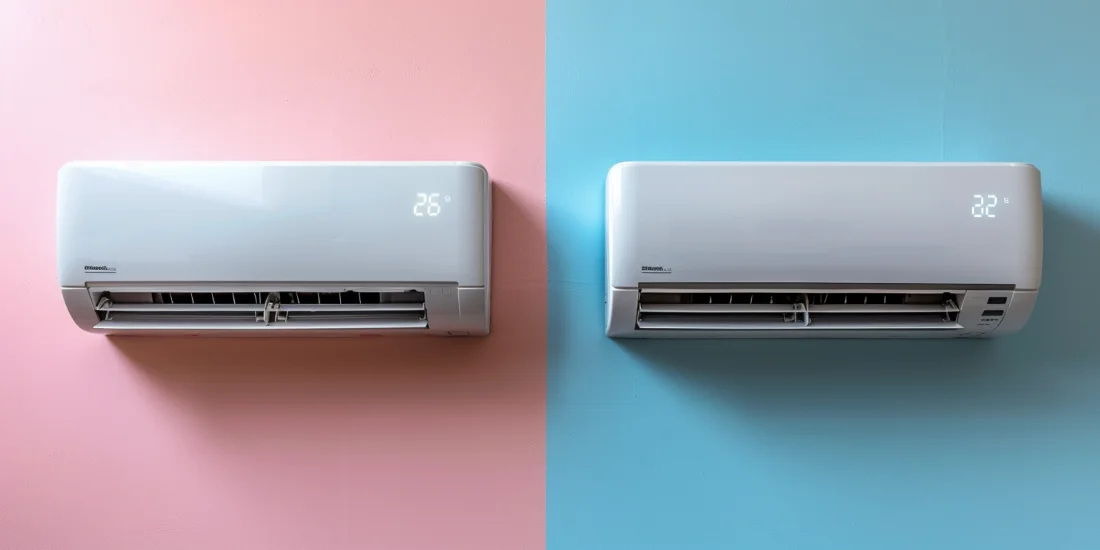The choice between R32 vs R410 refrigerants is a crucial decision for HVAC professionals and end-users alike. Both refrigerants are used in air conditioning systems, but they have different properties, environmental impacts, and performance characteristics. Understanding these differences can help in selecting the most suitable refrigerant for specific applications.
Introduction
R32 and R410A are two of the most commonly used refrigerants in modern air conditioning systems. While both are effective at cooling, they have distinct properties that affect their performance, environmental impact, and safety. R32 is a newer refrigerant that is gaining popularity due to its lower Global Warming Potential (GWP) and higher efficiency. In contrast, R410A has been widely used for years and is known for its stability and reliability. This article will compare these two refrigerants in terms of environmental impact, efficiency, safety, and cost to help you make an informed decision.
Environmental Impact
One of the most significant differences between R32 and R410A is their environmental impact. R32 has a lower GWP of 675, compared to R410A’s GWP of 2088. This means that R32 is less harmful to the environment in terms of contributing to global warming.
Using R32 can help meet stricter environmental regulations and standards aimed at reducing greenhouse gas emissions. This is a critical consideration for businesses and homeowners looking to reduce their carbon footprint and comply with environmental policies.
Moreover, R32 is a single-component refrigerant, which makes it easier to recycle and reclaim. R410A, on the other hand, is a blend of two refrigerants, making its recycling process more complex and less efficient.
Efficiency and Performance
Efficiency is another crucial factor when comparing R32 and R410A. R32 has a higher cooling capacity and is more energy-efficient than R410A. This means that air conditioning systems using R32 can achieve the desired temperature more quickly and consume less electricity in the process.
The higher efficiency of R32 also translates to lower operating costs. Users can expect reduced electricity bills and overall savings over the system’s lifespan. Additionally, R32’s superior heat transfer properties contribute to its enhanced performance and efficiency.
However, R410A has been used for a longer time and is well-proven in the field. Its performance is reliable, and it has been the industry standard for many years. While R32 offers better efficiency, R410A’s long track record of reliability is also an important consideration.
Safety
Safety is a vital consideration when choosing a refrigerant. R32 is classified as an A2L refrigerant, which means it is mildly flammable. Proper handling, installation, and maintenance procedures must be followed to mitigate any risks associated with its flammability.
R410A, on the other hand, is classified as an A1 refrigerant, indicating that it is non-flammable and poses a lower risk in terms of flammability. This makes R410A a safer choice in environments where flammability is a significant concern.
However, R32 requires less refrigerant charge per unit of cooling capacity compared to R410A. This means that systems using R32 can have a smaller refrigerant charge, potentially reducing the risk associated with refrigerant leaks.
Cost
Cost is an important factor for both initial investment and long-term operation. R32 systems generally have a lower refrigerant cost compared to R410A systems. This is due to R32’s higher efficiency and lower required refrigerant charge, which can lead to savings on refrigerant costs.
Moreover, the improved energy efficiency of R32 translates to lower operating costs, providing savings on electricity bills over the life of the system. However, the initial cost of R32-compatible equipment may be higher due to its newer technology and the need for specialized components to handle its properties.
On the other hand, R410A systems may have a lower initial equipment cost since they are widely available and have been used for many years. However, the higher GWP and lower efficiency of R410A can result in higher long-term operating costs and environmental compliance expenses.
Key Takeaways
– Environmental Impact: R32 has a significantly lower GWP than R410A, making it a more environmentally friendly choice.
– Efficiency and Performance: R32 offers higher efficiency and cooling capacity, leading to lower operating costs and enhanced performance.
– Safety: R32 is mildly flammable (A2L), requiring careful handling, while R410A is non-flammable (A1) and poses a lower flammability risk.
– Cost: R32 systems can be more cost-effective in the long run due to lower refrigerant costs and improved energy efficiency, despite potentially higher initial equipment costs.
Choosing between R32 and R410A depends on the specific needs and priorities of the application, including environmental concerns, efficiency requirements, safety considerations, and budget constraints. Understanding these factors can help make an informed decision that aligns with both operational and sustainability goals.



